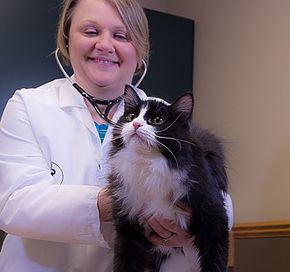Sebaceous glands are small glands found throughout all haired skin. They secrete and oily substance (sebum), which coats the skin and hair, helping to retain moisture and keep the coat glossy.
Occasionally these glands malfunction resulting in the following conditions:
Sebaceous cyst – glandular secretions become trapped below the skin causing solitary firm nodules. These are generally not painful nor problematic. However, they may break open, drain or become infected. In these situations surgical removal is required.
Sebaceous adenomas/hyperplasia – are seen commonly in older dogs. Usually firm, elevated, well-defined cauliflower-like nodules (resembling warts) which occur anywhere on the body. These are benign growth that are often more of a cosmetic concern rather than a medical problem. Occasionally these growths may become problematic if the pet chooses to chew or lick them resulting in irritation, infection or bleeding.
Treatment for these growths is surgical removal, depending on their location and if they are causing problems for the pet.
Sebaceous adenocarcinomas – are more aggressive tumors of the sebaceous glands. Any ulcerated, rapidly growing, invasive appearing growth should be surgically removed as soon as possible.
It is important to continually check your pets for new lumps or growths and bring them to the attention of one of our veterinarians. Many sebaceous gland disorders can be diagnosed by their appearance; however, some may require further diagnostics such as a fine needle aspirate or a biopsy.

